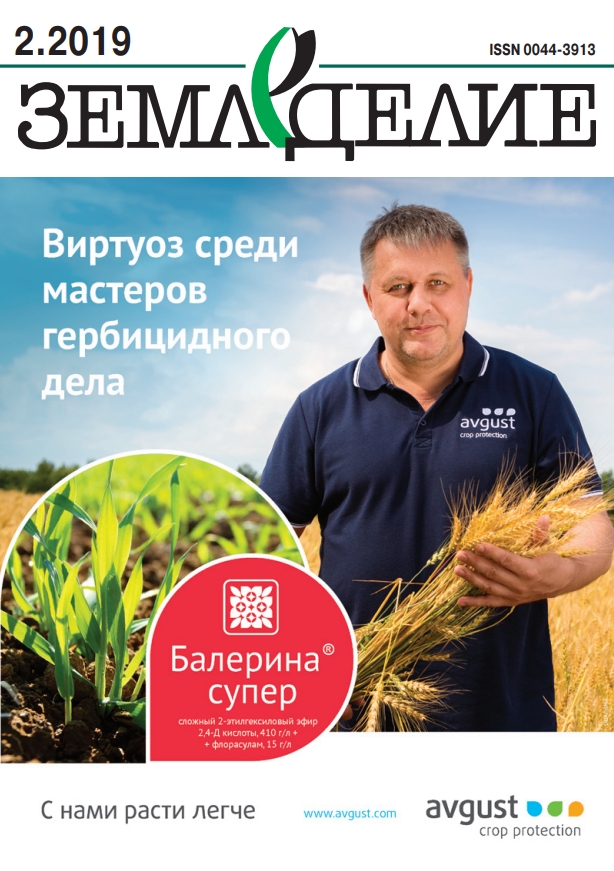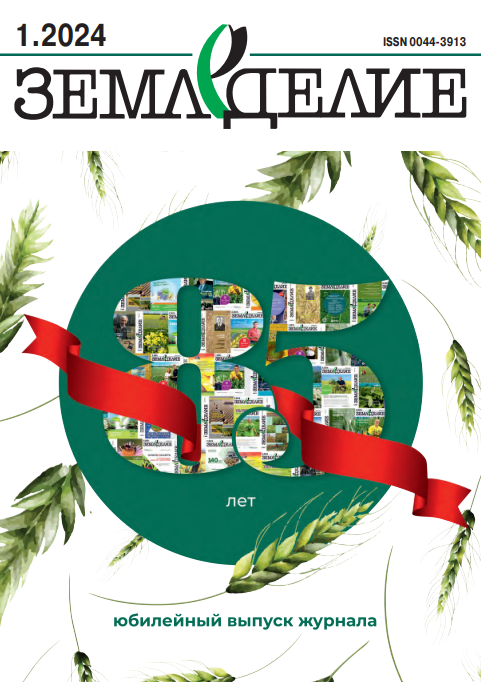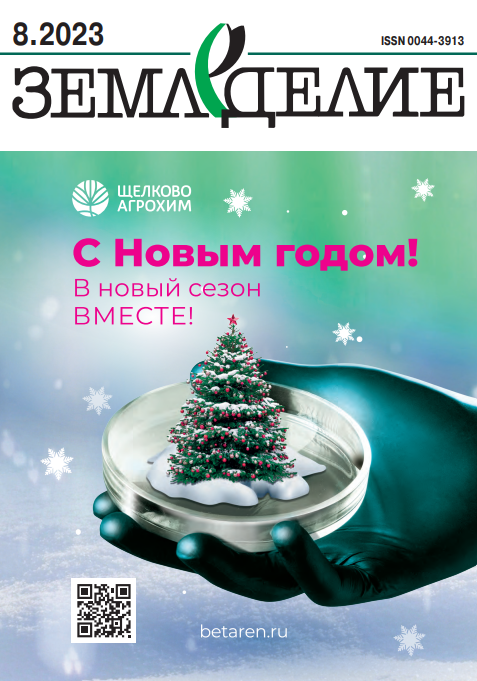Эффективность защиты сортов яровой пшеницы от вредных организмов
DOI: 10.24411/0044-3913-2019-10213
УДК: 632.1/4:632.6/7:633.1:631.526.32
А. А. Слободчиков, кандидат сельскохозяйственных наук, старший научный сотрудник (e-mail: Адрес электронной почты защищен от спам-ботов. Для просмотра адреса в вашем браузере должен быть включен Javascript.)
Сибирский научно-исследовательский институт растениеводства и селекции – филиал Федерального исследовательского центра «Институт цитологии и генетики Сибирского отделения РАН», ул. С-100, зд.21, а/я 375, пос. Краснообск, Новосибирская обл., 630501, Российская Федерация
Исследования проводили в 2017– 2018 гг. на опытном поле СибНИИРС – филиал ИЦиГ СО РАН в типичных для лесостепной зоны Западной Сибири почвенно-климатических условиях. Почва – чернозем выщелоченный среднесуглинистый. В целом годы исследований были благоприятными для роста и развития растений, а также формирования урожая зерна. В опыте изучали 5 сортов мягкой яровой пшеницы сибирской селекции (фактор А): Сибирская 21, Новосибирская 31, Обская 2, Новосибирская 18, Сибирская 17. На их фоне реализовывали следующие варианты защиты растений (фактор В): без применения инсектицидов и фунгицидов – контроль; фунгицид (протравливание семян); фунгицид (протравливание семян) + инсектициды (обработка растений в фазах полные всходы и колошение); фунгициды (протравливание семян и обработка растений в фазе колошения) + инсектициды (обработка растений в фазах полные всходы и колошение). Посев проводили в конце второй декады мая сеялкой СН-16, норма высева – 6 млн всхожих зерен/га. Предшественник – чистый пар. В среднем по всем сортам от использования протравителя семян урожайность увеличивалась на 2,5 %, от протравителя и инсектицидов – на 14,4 %, от комплекса фитосанитарных средств – на 24,4 %. Без применения фунгицидов и инсектицидов, а также при проведении защитных мероприятий наиболее рационально возделывать сорт Обская 2, который в обоих случаях формировал самую высокую урожайность. Полный комплекс фитосанитарных средств экономически более целесообразно использовать при возделывании сортов пшеницы Сибирская 17 и Новосибирская 31, поскольку условный чистый доход от реализации дополнительной продукции этих сортов достигал наибольших значений (3022 и 3792 руб./га соответственно).
Ключевые слова: сорт, яровая мягкая пшеница, фунгицид, инсектицид, урожайность, условный чистый доход.
Для цитирования: Слободчиков А. А. Эффективность защиты сортов яровой пшеницы от вредных организмов // Земледелие. 2019. № 2. С. 45–47. DOI: 10.24411/0044-3913-2019-10213.
Efficiency of Protection of Spring Wheat Varieties from Pests
A.A. Slobodchikov
Siberian Research Institute of Plant Growing and Breeding – the branch of the federal state budgetary scientific institution «Federal Research Center the Institution of Cytology and Genetics of the Siberian Branch of the RAS», ul. S-100, zd. 21, a/ya 375, pos. Krasnoobsk, Novosibirskii r-n, Novosibirskaya obl., 630501, Russian Federation
Abstract. The investigation was carried out in 2017–2018 on the experimental field of the Siberian Research Institute of Plant Growing and Breeding under typical soil and climate conditions for the foreststeppe zone of Western Siberia. The soil was leached medium loamy chernozem. In general, the years of the research were favourable for the growth and development of plants, as well as for the formation of grain yield. In the experiment, we studied 5 varieties of soft spring wheat, developed in Siberia (factor A): Sibirskaya 21, Novosibirskaya 31, Obskaya 2, Novosibirskaya 18, Sibirskaya 17. Factor B included variants of plant protection: without the use of insecticides and fungicides (the control); fungicide (seed treatment); fungicide (seed treatment) + insecticides (treatment of plants in the phase of full germination and earing); fungicides (seed treatment and processing of plants in the earing phase) + insecticides (processing of plants in full germination and earing phases). Seeds were sown at the end of the secod decade of May with SN-16 seed drill; the seeding rate was 6 million of germinating seeds on a hectare. The forecrop was bare fallow. On average for all varieties, the use of the seed protectant increased the yield by 2.5%; combined application of the seed protectant and insecticides increased it by 14.4%. The complex of phytosanitary measures promoted the growth of the yield by 24.4%. Without the use of fungicides and insecticides, as well as with protective measures, it was most rational to cultivate Obskaya 2 variety, which formed the highest yield in both cases. It was economically more profitable to use the full complex of phytosanitary measures when cultivating Sibirskaya 17 and Novosibirskaya 31 wheat varieties since the conditional net income, received from the sale of additional products of these varieties, reached the highest values (3022 and 3792 RUB/ha, respectively).
Keywords: variety; spring soft wheat; fungicide; insecticide; yield; net profit.
Author Details: A. A. Slobodchikov, Cand. Sc. (Agr.), senior research fellow (email: Адрес электронной почты защищен от спам-ботов. Для просмотра адреса в вашем браузере должен быть включен Javascript.).
For citation: Slobodchikov A. A. Efficiency of Protection of Spring Wheat Varieties from Pests. Zemledelie. 2019. No. 2. Pp. 45–47 (in Russ.). DOI: 10.24411/0044-3913-2019-10213.










